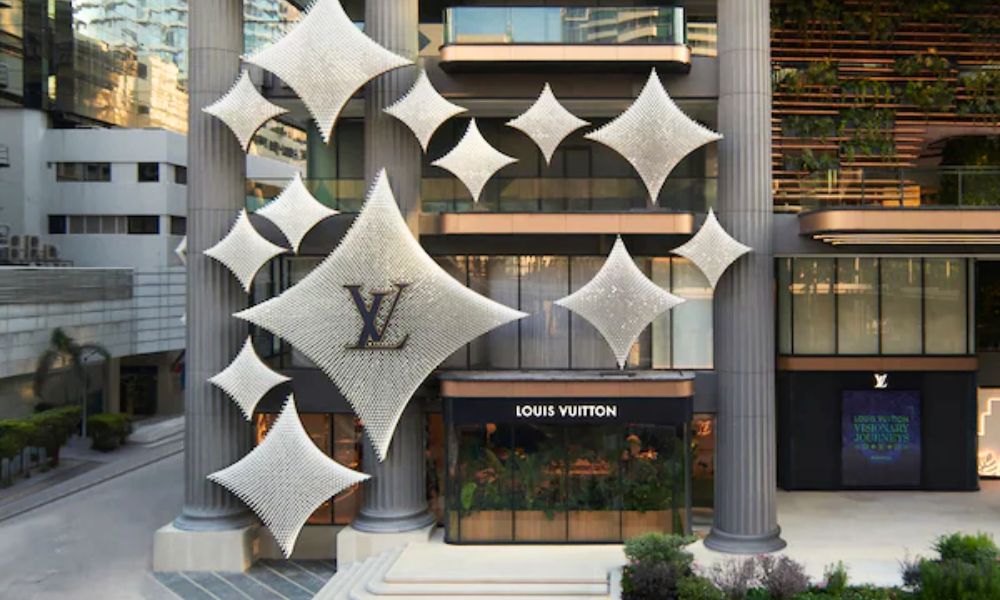Sales of personal luxury goods are expected to fall 2% this year, the biggest drop since the Great Recession. Regardless of economic fluctuations, the luxury goods market has consistently regained its footing over the years, even with issues such as the pandemic occurring in between. The market is expected to recover this time as well, but the slowdown is clear.
Luxury sales forecasts for 2024 are as follows: bain and companyAnd by the end of the year, we forecast the market to remain flat year-on-year at constant exchange rates, contracting by 2% to €363 billion ($386 billion) at current exchange rates, revised slightly downward. . That was higher than the estimate Bain provided in May.

Luxury sales expected to fall 2% this year
We are witnessing the weakest year for the luxury goods market, with estimates suggesting that the market has lost 50 million consumers this year. This is considered the first market slowdown since the Great Recession, excluding the period of the coronavirus pandemic. The market in 2024 is expected to be flat or contracted compared to the previous year.
The decline of the luxury goods industry is related to the problems facing China. This is because some of the major consumers of luxury goods are located in this region. The country has seen a 20% year-on-year decline in spending as a result of economic factors and government regulations. Despite the boom in production in categories such as EVs, the economic benefits have not spread far enough across the country to offset the overall economic situation.
China’s purchasing power could be further affected by tariffs suggested by the incoming U.S. administration, which could spur a decline in support for brands in the U.S. Predictions suggest the Chinese market will It is unlikely that there will be a significant recovery in time for tariffs. Half of 2025.
The decline in global luxury goods sales in 2024 goes beyond just a decline in Chinese patronage.
While it is true that the economies of China and South Korea are slowing rapidly, regions such as Japan, Southern Europe, and the United States remain avid buyers. Although the numbers are more balanced across regions, the overall approach to luxury goods and their value has changed recently.
Luxury personal goods refer to exquisite products, from top-of-the-line cosmetics to bags and shoes. These products are essentially aimed at a small number of buyers who can afford to pay a high amount of money to have the brand featured in their daily lives. The more exclusive the launch, the higher the price. The higher the price, the more out of reach for potential customers.
vogue business This suggests that the decline in sales of luxury goods is also the result of a change in business strategy. Previously, brands still targeted upper-class people who were most likely to be their regular customers, but these brands did not ignore the middle class. The middle class of the population viewed these luxury goods as objects of aspiration and saved up to invest in a few carefully selected products, increasing the sales reach that brands could achieve.
Luxury brands are now shrinking their already limited customer base by raising the prices of their products and making them completely out of reach for everyday consumers. To sustain such a strategy, brands must ensure that their limited but expensive products sell out every time.
The luxury goods industry is in decline in many ways, and brand identities no longer have the power and presence they once did. Customers are also concentrating elsewhere as the uncertainty caused by the economic situation is enough to delay purchases. Luxury has lost its luster, especially among Gen Z buyers.
It’s not all bad news for the luxury personal goods market
Despite expectations for a downward revision in luxury goods sales in 2024, consumers are not completely turning away from the brand as some categories are doing better than others. do not have. The beauty products and eyewear category has successfully reinvented itself and maintained its status as a ‘little luxury’. Jewelry proved to be the most reliable product category, but sales of shoes and watches remained disappointing.
Report by bain and company suggests that despite the disappointing 2024 luxury sales forecast, the market can expect to face slightly improving conditions throughout 2025, unless macroeconomic factors change rapidly in the interim. I’m doing it. Brands that want to stay relevant will need to rethink their strategies and get creative with the experiences they can offer younger consumers without losing the loyalty of long-term customers.



